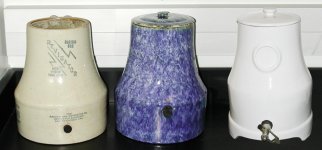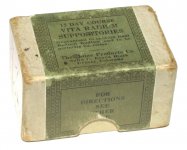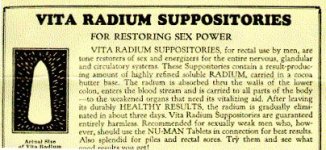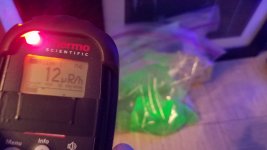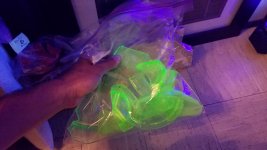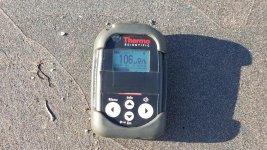UnderMiner
Silver Member
- Jul 27, 2014
- 3,819
- 9,726
- 🥇 Banner finds
- 2
- Detector(s) used
- Minelab Excalibur II, Ace 250
- Primary Interest:
- All Treasure Hunting
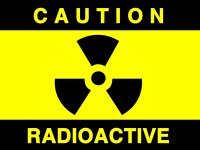
I recently acquired a pocket geiger counter and was having some fun finding some radiation sources. First I checked my house and was surprised to find a super radioactive compass in my basement among things my grandfather owns. The compass emits so much gamma radiation that I was able to find it just by following the beeps of the geiger counter as I got nearer to its location inside an old chest of draws.
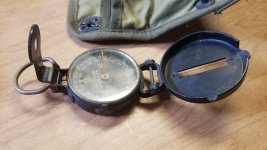
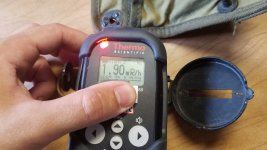
Long story short it turned out to be a WWII Radium Dial on the compass that was emitting 1.9 Millirem per hour, nearly 1000 times higher than normal background radiation levels - extremely high for something just laying around the house, but it is in fact quite low when you consider you would have to be in close contact with the compass for over 5 hours before you received the equivalent dose of radiation emitted by just a single medical X-Ray scan. Still, back in the day when the compass was new in the 1940's it would have been significantly more radioactive and would have likely been in someone's pocket (my grandpa's) for days or even weeks at a time, so that couldn't have been too good for you.
This really sparked my curiosity in radioactive antiques. In my house alone I ended up finding two clocks with radium dials that emitted just under 100 Microrem each - LESS powerful than the compass but still 50 times higher than normal background radiation levels (which is about 2 Microrem).
The next thing I wanted to do in my adventure through radiation hunting was find some radioactive things outside of my house. So I took the geiger counter to the beach and found some granite/marble boulders that are naturally radiation-emitting. The boulders put out between 10 and 40 Microrem of Gamma radiation - pretty high considering they're just rocks, but not high enough to warrant concern. I chipped off a piece of the boulder and measured it and it did not register as radioactive at all, this is because the boulder's radiation is spread out very thinly throughout its entire structure and any one little piece is not concentrated enough to register. Only by being very large would these rocks register as radioactive.
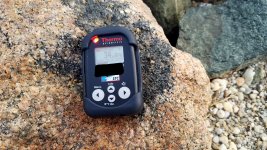
Next I took my geiger counter to an old landfill and I discovered little pieces of orange dinner plate called Fiestaware that was popular in the 1930's. The tiny fragments emitted around 17 Microrem despite being very small their radiation content was very concentrated. Considering these plates were meant for food use is disconcerting. My research indicates that Pre-WWII Fiestaware was made using Uranium 238 glaze which gave the plate a nice bright orange color, it also would have made eating food off the plate quite dangerous as acidic foods had a tendency to leach the Uranium out of the glaze and then... well, you're eating Uranium. Luckily for people living in America, WWII broke out and the US government seized all the Uranium 238 being used by the Fiestaware manufacturing plant for use in the Manhattan Project. And so Fiestaware discontinued the Uranium Orange plates from their stores as a result (Later in the 1960's-1970's they reintroduced the Orange plate using Depleted Uranium from spent nuclear fuel rods, "yum yum", they were not particularly popular at this time as people had wized up to the fact that Uranium is not good to eat and the plates were discontinued.)
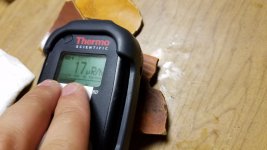
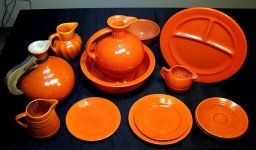
Also at this landfill I found a mysterious area that was radioactive alot more than it should have been. The ground was measuring 70-75 Microrem (35 times higher than normal background radiation levels) and the source appeared to be incinerator slag and not naturally occurring radiation from granite stone. Just by standing above the area the geiger counter was indicating over 20 Microrem - ten times higher than normal, and the sensor wasn't even in contact with anything.

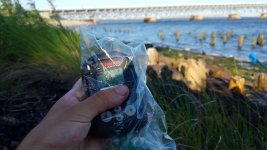
I took 5 samples of small slag rocks from the area and tested them individually, 3 turned out to be nonradioactive while two measured 20 Microrem, ten times higher than normal background radiation levels, considering they are very small their radiation is too concentrated to be from a naturally occurring source, there is some sort of nuclear material in these pieces of slag and so far I have no idea what it could be. If I had to guess I would say Radium but it could be anything. I can't do it now, but in the future I may have the samples analyzed under a spectrometer to identify what material is in them, for now they are stored in a plastic bag sealed in a lead container.
Now I bring my little geiger counter everywhere in hopes that I will find something radioactive randomly through my daily travels.
Does anyone have any stories about hunting for, owning, or finding radioactive objects?





